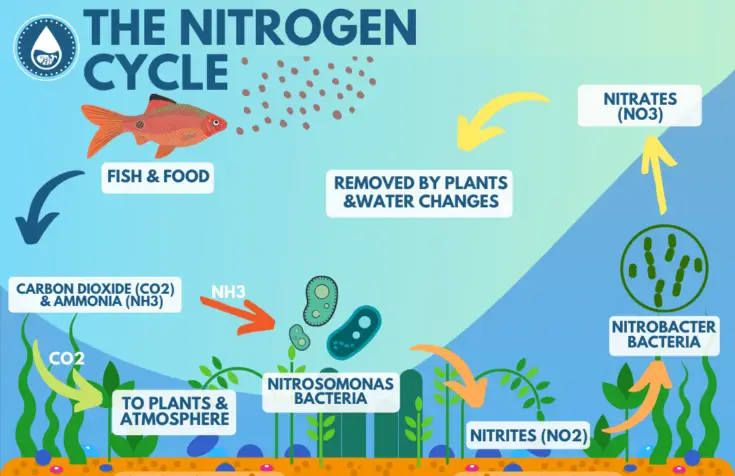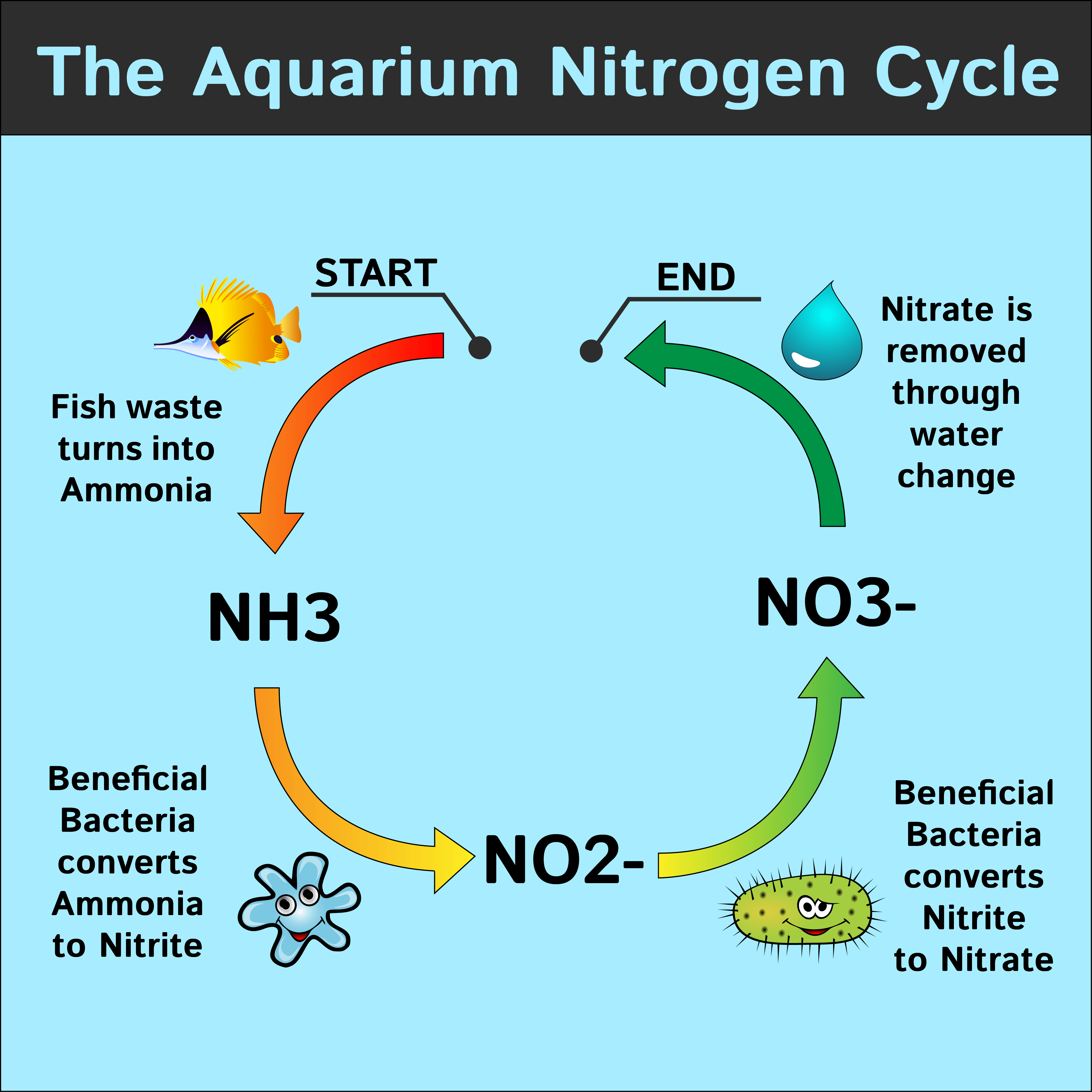Are you looking to add nitrates to your aquarium but don’t know where to start? Nitrates are an essential nutrient for your aquatic plants and can help maintain a healthy ecosystem within your tank. In this guide, we will walk you through the steps of how to add nitrates to your aquarium and ensure your plants thrive.
Whether you’re a seasoned aquarium enthusiast or new to the hobby, adding nitrates can be a simple and straightforward process. With a few basic steps and some guidance, you can provide your aquatic plants with the nutrients they need to grow healthy and strong. So, let’s dive in and learn how to add nitrates to your aquarium!
- Test the aquarium water to determine the current nitrate levels.
- Calculate the required amount of nitrates to be added based on the size of the aquarium and the current nitrate levels.
- Choose a suitable nitrate supplement and add the required amount to the aquarium water, following the manufacturer’s instructions.
- Wait for at least 24 hours and retest the nitrate levels to ensure that they have increased to the desired level.
- Monitor the nitrate levels regularly and adjust the dosage of the nitrate supplement as necessary.

How to Add Nitrates to Aquarium?
Adding nitrates to an aquarium can be essential for maintaining a healthy environment for your aquatic pets. Nitrate is a vital nutrient for aquatic plants, and it helps to control algae growth in the aquarium. In this article, we will discuss how to add nitrates to your aquarium in a safe and efficient way.
Understanding Nitrates
Nitrates are a byproduct of the nitrogen cycle in the aquarium. Fish waste, uneaten food, and decaying plants produce ammonia, which is then converted into nitrite and nitrate by beneficial bacteria. Nitrate is less toxic than ammonia or nitrite, but high levels of nitrate can still harm fish and invertebrates in the long run. Therefore, it is crucial to monitor and regulate the nitrate levels in your aquarium.
To measure the nitrate level, you can use a test kit specifically designed for aquarium use. The ideal nitrate level for freshwater aquariums is between 5 and 20 parts per million (ppm), while the acceptable range for saltwater aquariums is up to 40 ppm.
Adding Nitrates to Aquarium
There are different ways to add nitrates to an aquarium, depending on your setup and the needs of your aquatic plants and animals. Here are some common methods:
1. Use commercial fertilizers
You can buy specialized fertilizers that contain nitrates and other nutrients essential for plant growth. These fertilizers come in liquid, powder, or tablet form and are usually added directly to the water or substrate. Follow the manufacturer’s instructions and dosage recommendations carefully, as overdosing can be harmful.
2. Add fish food or organic matter
Fish food and other organic matter can release nitrates into the water as they decompose. This method can be beneficial for planted aquariums, as it provides a natural source of nutrients. However, it can also contribute to excess waste and algae growth if not managed properly. Only feed your fish the amount they can consume in a few minutes, and remove any uneaten food promptly.
3. Use nitrogen-rich substrates
Some substrates, such as soil or clay, contain high levels of nitrogen and other minerals that can benefit plant growth. These substrates are usually used in planted aquariums and can be mixed with other substrates or used as a top layer. However, they can also release ammonia and other harmful substances if not cycled properly, so be cautious and monitor the water parameters closely.
Benefits of Adding Nitrates
Adding nitrates to your aquarium can bring many benefits, such as:
– Promoting healthy plant growth and oxygenation
– Reducing algae growth and improving water clarity
– Supporting the nitrogen cycle and beneficial bacteria
– Enhancing the natural beauty and diversity of your aquarium
Nitrates Vs. Nitrites
Nitrate and nitrite are often confused, but they have different properties and effects on the aquarium. Nitrite is more toxic than nitrate and can cause fish to suffocate by blocking their ability to transport oxygen. Nitrite is also a sign of an immature or malfunctioning nitrogen cycle, and its presence should be minimized by regular water changes and testing.
Nitrate, on the other hand, is less harmful but can still cause health issues if the level is too high. Nitrate can also contribute to algae growth and the depletion of oxygen in the water. Therefore, it is essential to maintain a healthy balance of nitrate and other nutrients in your aquarium.
Conclusion
Adding nitrates to an aquarium is a crucial step in maintaining a healthy and vibrant aquatic environment. Whether you choose to use commercial fertilizers, organic matter, or nitrogen-rich substrates, make sure to monitor the nitrate levels and adjust accordingly. By providing your aquatic pets with the right amount of nitrates, you can promote their overall well-being and enjoy a beautiful and thriving aquarium.
Frequently Asked Questions
Here are some commonly asked questions related to adding nitrates to an aquarium:
What are nitrates, and why should they be added to an aquarium?
Nitrates are a form of nitrogen that is essential for the growth of aquatic plants. They are also an important source of food for algae and other microorganisms that live in the aquarium. Adding nitrates to an aquarium helps to maintain a healthy balance of nutrients that is necessary for the survival of the aquatic ecosystem.
However, excessive amounts of nitrates can also be harmful to fish and other aquatic animals. Therefore, it is important to monitor the levels of nitrates in the aquarium and add them in moderation.
How can I add nitrates to my aquarium?
There are several ways to add nitrates to an aquarium. One way is to use a commercial fertilizer that contains nitrates. These fertilizers are available in liquid or powder form and can be added directly to the aquarium water.
Another way to add nitrates is to use natural sources such as fish waste and decaying plant matter. These sources of nitrates can be added by increasing the number of fish in the aquarium or by adding more plants or plant debris.
How often should I add nitrates to my aquarium?
The frequency of adding nitrates to an aquarium depends on the specific needs of the aquatic ecosystem. For a planted aquarium, it is recommended to add nitrates once or twice a week, depending on the growth rate of the plants. In a non-planted aquarium, nitrates can be added once every two to three weeks.
It is important to monitor the levels of nitrates in the water regularly and adjust the frequency of adding nitrates accordingly to maintain a healthy balance of nutrients in the aquarium.
What are the risks of adding too many nitrates to an aquarium?
Adding too many nitrates to an aquarium can lead to an overgrowth of algae and other microorganisms, which can cause the water to become cloudy and murky. This can also lead to a decrease in oxygen levels in the water, which can be harmful to fish and other aquatic animals.
Additionally, high levels of nitrates can also lead to the growth of harmful bacteria in the water, which can cause diseases and infections in fish and other aquatic animals.
How can I test the levels of nitrates in my aquarium?
There are several ways to test the levels of nitrates in an aquarium. One way is to use a nitrate test kit, which is available at most pet stores. These kits use a colorimetric method to measure the levels of nitrates in the water.
Another way to test the levels of nitrates is to take a water sample to a laboratory for analysis. This method is more accurate but can be more expensive and time-consuming.

Nitrate in Aquariums: What You ACTUALLY Need to Know
In conclusion, adding nitrates to your aquarium is a crucial step in maintaining a healthy and thriving aquatic environment. By following the steps outlined in this guide, you can ensure that your aquarium is receiving the proper amount of nitrates to support the growth and health of your fish and plants.
Remember, it’s important to test the water in your aquarium regularly to ensure that the nitrate levels are within a safe range. If you notice any unusual changes in your aquarium, such as cloudy water or sick fish, be sure to take action immediately to prevent any further harm.
With the right knowledge and tools, adding nitrates to your aquarium can be a simple and rewarding task. By providing your fish and plants with the proper nutrients, you can create a beautiful and thriving aquatic ecosystem that will bring you joy for years to come.
